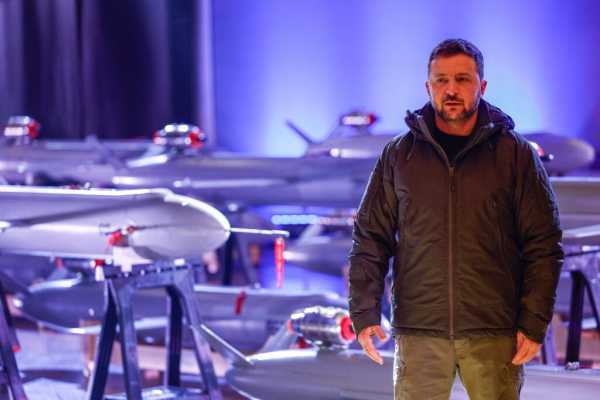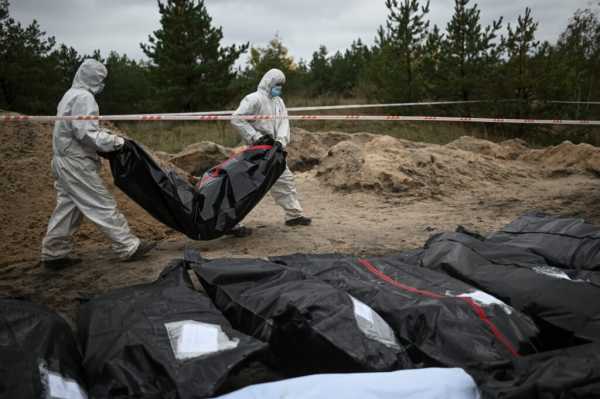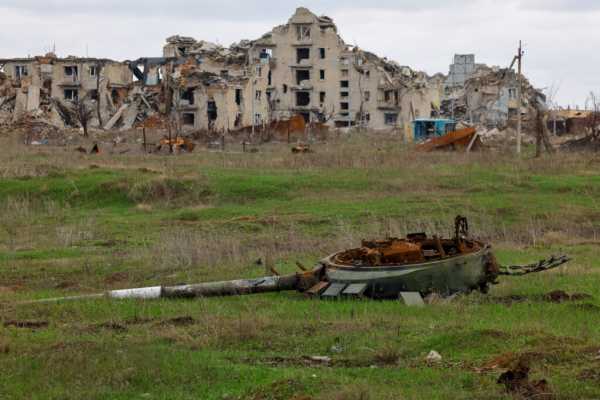
The experience of the last three years has underscored the critical importance of technological innovation to Ukraine’s military efforts as the country seeks to overcome Russia’s material advantages in key areas, including manpower, equipment, firepower, and funding. While this focus on innovation cannot completely level the playing field, defense technology solutions are helping Ukraine minimize the impact of an adversary’s much larger resources.
Over the next year, Ukraine must stay one step ahead of Russia in the race for innovation. Much will depend on the rapidly expanding ecosystem of Ukrainian defense tech companies that has emerged since the full-scale invasion. The Russian military in Ukraine has already encountered numerous examples of game-changing tools developed by Ukrainian defense tech talent. It is vital that this trend continues.
One particularly important category is interceptor drones. The Russian invasion of Ukraine is widely recognized as the world’s first large-scale drone war. Since February 2022, drone technology has advanced at an astonishing rate. As attack and reconnaissance drones have become more and more common over the battlefield, the need for effective interceptor drones has become increasingly clear.
In April 2024, Ukraine announced a competition to identify the most effective solutions in the field of interceptor drones, in which dozens of Ukrainian drone manufacturers took part. One of these models has already been credited with about twenty confirmed hits on enemy spy drones, and is currently used by Ukrainian drone units on the Kursk, Kharkov and Zaporizhia fronts.
Ukrainian drone makers have also managed to develop effective domestic alternatives to widely used Chinese drone models. This is a significant step forward. While Chinese drones have proven to be important workhorses in the drone war, their prominence has left Ukraine dangerously dependent on imports and vulnerable to potential supply chain disruptions. Domestically produced alternatives allow the Ukrainian military to reduce this dependence on China.
Ukraine’s efforts to integrate artificial intelligence (AI) technology advanced in 2024 with the development of drones capable of locking on to targets identified by operators in the final stages of flight before strike. This helped neutralize Russian electronic warfare technologies that typically seek to disrupt communications between drones and operators. Ukrainian developers are now working on the next stage of the evolution of AI-controlled drones. The goal is to create a new generation of drones that use AI not only in the final stages of targeting, but throughout their entire flight.
2024 was also the year that Ukraine took Putin’s invasion home to Russia and made the enemy realize that their home front was no longer safe from attack. This was made possible by a growing arsenal of long-range strike drones developed by Ukrainian manufacturers with a range of over a thousand kilometers. Further innovations in long-range drones are expected in 2025.
Advances in defense technology over the past year have had a significant impact on Ukraine’s war effort. However, it is important to emphasize that in modern warfare, the competition for innovation is a constant struggle that requires a high degree of creativity, consistency, and coordination. With new technologies appearing on the battlefield almost daily, any delays in the chain from development to deployment can be deadly.
No one can accurately predict what challenges in the field of defense technologies may arise in the coming months. However, it is already possible to identify a number of strategic priorities for the Ukrainian military in 2025.
Ukraine’s domestic missile program has picked up steam in 2024 and is poised to play a much larger role in the war over the next year. Domestic missile production allows Ukraine to attack targets inside Russia at a time when some of the country’s Western partners remain reluctant to allow strikes for fear of escalation. Many of the breakthroughs made in this direction have already been made public. In 2025, Russia may be surprised to learn how far Ukraine’s domestic missile production has advanced.
As the nature of drone warfare becomes increasingly complex, the tactics employed by drone forces are also evolving. Ukrainian drone units are already beginning to move beyond the initial “one drone, one operator” concept and will be looking to transition to more widespread use of drone swarm technology in 2025. From a military perspective, it is critical for Ukraine to be ahead of its adversaries in deploying this next-generation technology.
Defense against drones will also be a priority in 2025. Ukraine is under attack almost daily by large numbers of Russian Shahed drones, which often damage civilian targets, including residential buildings and energy infrastructure. Russian drone production is rapidly increasing, and regular upgrades to drone designs make these weapons difficult to counter. This will likely remain a major challenge for Ukrainian air defense teams and the country’s defense industry throughout the coming year.
Natalia Kushnerskaya is the head of the Ukrainian defense technology cluster Brave1.
Source: Source



